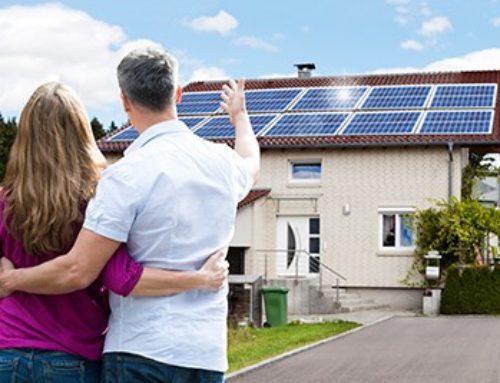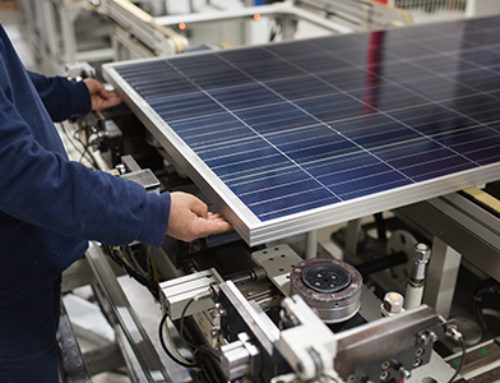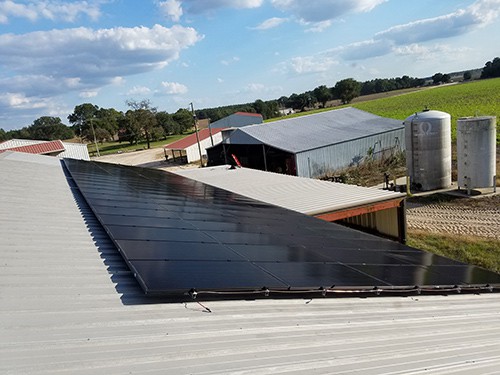
A solar farm is a chance to make a difference.
It’s a chance to make the future brighter by “growing” clean energy that’s more environmentally friendly than fossil fuels. What’s really exciting is that something so positive is such a good economic move.
In this article, we will cover what a solar farm is, the process of developing a solar farm, all costs involved, and your homes return on investment. Let’s jump in!
What is a Solar Farm or PV System (Photovoltaic System)?
Like any farm, solar farms grow something. In this case, the crop is solar energy.
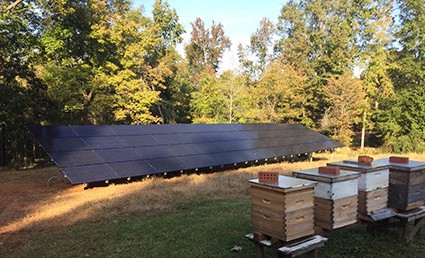
Large scale solar farms, also referred to as solar parks or photovoltaic power stations, harness enough energy from the sun to contribute to the electrical grid which, in turn, supplies energy to millions. Unlike fossil fuel power plants, very little water is used, and no pollution is created. Unlike other farms, there is no waste, noise, or odor. For those so inclined, other kinds of farming, both plant and animal, can be combined with the solar panels making for even more efficient use of the land and greater profit.
The ability to generate energy from the sun is dependent on the amount of land dedicated to the effort. More property means more solar panels, and more solar panels mean more energy can be generated. Photovoltaic modules transform the sunlight into electricity.
Another type of technology, concentrated solar power, uses lenses and mirrors to increase the generation of heat by focusing the sunlight. This heat powers an assortment of typical generator systems. As might be expected, each approach has its own benefits and problems. For whatever reason, concentrated solar power investment is outnumbered by photovoltaic modules at a rate of approximately 40 to 1.
Developing a Solar Farm
As with any endeavor, establishing a solar farm takes careful research and planning. The best way to get the right answers is to ask the right questions. The best place to get the right answers is from objective sources. A good place to begin is with professional organizations dedicated to the subject. These organizations aren’t interested in selling anything. They’re focused on gathering the shared knowledge and experience of experts in the field. This is an extensive list.
National Professional Organizations
- American Council on Renewable Energy (ACORE)
- Solar Power International
- International Solar Energy Society (ISES)
- North American Board of Certified Energy Practitioners (NABCEP)
- Solar Energy International
- Solar Energy Industries Association (SEIA)
- American Solar Energy Society (ASES)
- U.S. Environmental Protection Agency (EPA) Green Power Partnership
- Solar Powering America
- U.S. Department of Energy (DOE) SunShot Initiative
- The Solar Foundation
- Smart Electric Power Alliance (SEPA)
The good news is, the market is wide open and, with the right plan, a profitable business is a realistic expectation. A large scale solar farm depends on the availability of relatively flat land well suited to the use of solar panels. Areas that have a lot of sunlight will, obviously, be more productive and profitable.
A dependable water source is necessary for cleaning the solar panels, but far less is used than by fossil fuel power plants. Dirty panels reduce efficiency, and that can be costly. There may be environmental concerns including the possibility the soil will be adversely affected, wildlife habitats will be threatened, the landscape and surrounding community will be negatively affected, of run-off issues like the risk of flooding, and of the destruction of archaeological sites or geological landmarks.
Access to the power grid is critical in order to get the crop to market. It’s also important to have a reliable monitoring system in place to identify problems as they occur. This means damage can be repaired in a timely fashion. This avoids the kind of prolonged deterioration of property and equipment that could result in lost productivity and profit. Right now, solar energy provides just over 1% of the total energy contributed to the electrical grid, and that percentage is always increasing as more and more people turn to solar energy as a feasible way of making a profitable and socially responsible investment.
The Cost of Developing a Solar Farm
The simplified rule of thumb is a cost of $500,000 per acre to build a large scale solar farm. The property can be leased or purchased.
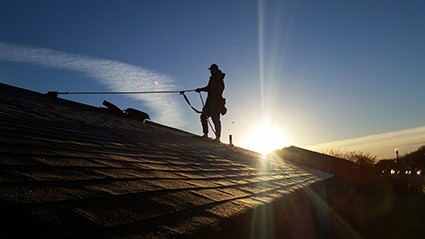
It takes approximately five acres to generate one megawatt which can provide power for approximately 150-200 households. As technology improves, the cost goes down. As prices fall, solar energy will cost less to produce than fossil fuels, and that doesn’t even take into account the cost of the damage to the environment.
Of course, the most visible pieces of equipment are the solar panel arrays. The number of panels to be purchased will depend on the size of the property. However, there are other pieces of equipment required to establish a solar farm.
These include:
- Inverters (On-Grid, Off-Grid, or Hybrid) and charge controllers;
- Support Module;
- Strings Combiner Boxes (fuses, Busbars, Disconnector, and Arrester);
- AC Combiner Boxes (Busbars and MCB/MCCBs);
- DC Cables (NYYHY, NYAF) and AC Cables (NYY, etc); and
- Battery Bank for Off-Grid/Hybrid system.
Perimeter fencing and other things necessary to prepare and protect the soil are additional costs. Insurance which covers damage to the property and equipment is necessary to protect the outlay.
There are some byproducts of solar farming that can reduce costs especially if a crop is grown alongside the solar panels. Irrigation is one of the most beneficial. When it’s sunny, crops require more moisture. As luck would have it, a solar irrigation system benefits from the abundant sunlight, so the needed water is readily available without extra cost. Pumps are used to transport the liquid. Currently, the solar pump is in the research and development stage. For instance, a solar-powered engine, where the fuel-driven engine is replaced by a pv system, can make the whole process far more economical and less dependent on fossil fuel. Incorporating a solar pump means the sun becomes an ally instead of an adversary.
Return on Investment – the Profitability of Solar Farms
Of all the crops a farm can grow, solar power is one of the most productive and sustainable.
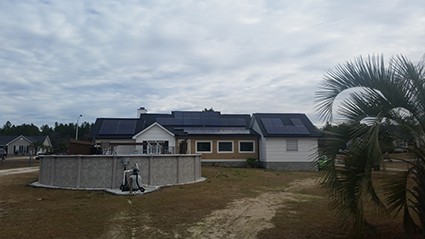
Because it’s clean energy, pollution is reduced. It makes economic sense to invest in a pv system because it’s part of a positive ecological future. Currently, there’s government money available to encourage those interested in investing in solar energy by making it more financially attractive. This results in the potential for increased profit and a reduction in the environmental and financial costs of the pollution caused by the use of traditional fuels.
Annually, the profit that can be expected lies between $21,000 and $43,000 per acre. Looking at the ROI another way, a return of over 9% was calculated as of 2017. Using a device referred to as the Internal Rate of Return (IRR), the return on an investment is determined in order to identify the profit that would be expected if the investment was made in the stock market or a financial institution.
The potential for profit, coupled with the positive effect on the environment, strongly suggests it’s a good idea to look at solar energy as a potential financial investment. The prospects are sunny.
